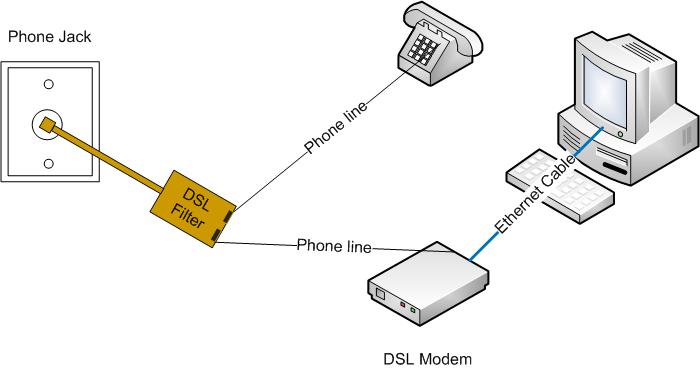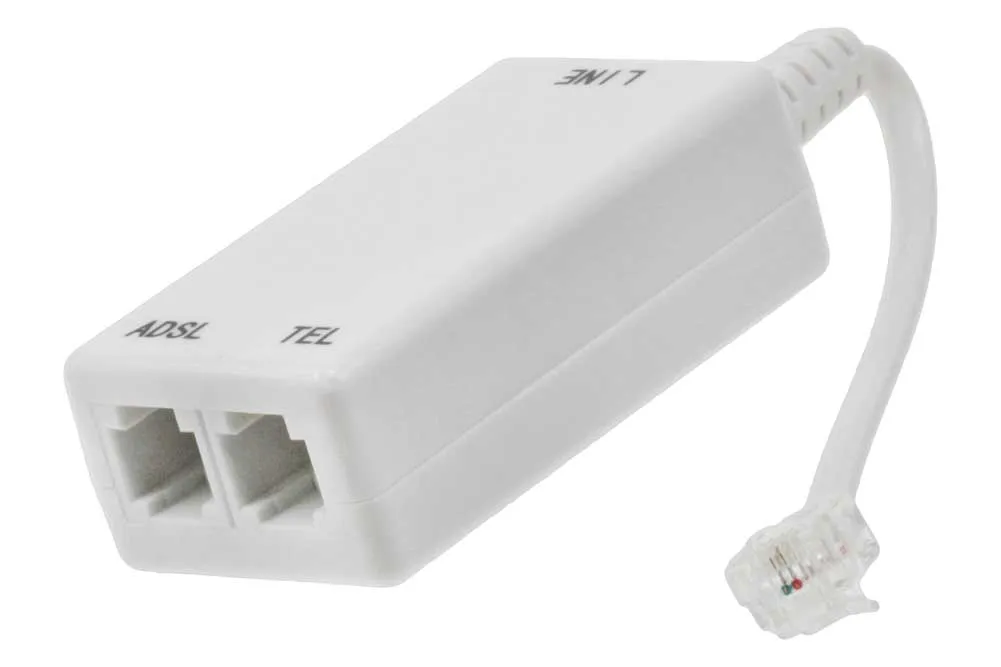How amazing if you could connect to the Internet without Internet cables? In this article, we will learn What does DSL Internet mean, What is DSL Internet, and How it works?
Despite the digital explosion, there is a huge shortage of Internet services and Internet connectivity in remote areas. Also, it costs a massive economic burden on the administration (if private are not there) to establish new Internet cables, and in this scenario, DSL Internet does a great job.
You might be amazed, does the Internet go through the phone line? Yes, it’s true. So let’s explore What does DSL Internet mean along with its functionality, advantages, and disadvantages.
What Is DSL? What Does DSL Internet Mean?

DSL, or digital subscriber line, connects the Internet through telephone lines. DSL is a high-speed Internet connection that uses your existing telephone line to connect you to the Internet. Also, read How To Get WiFi Without Internet Provider?
It is similar to a typical broadband Internet connection, but its speed is quite higher than your regular modem. However, the signal or network is better only when your location is nearer to the provider’s office/location.
Even in remote areas, where there are no primary facilities available, telephone lines are planted. Also, DSL internet is relatively less expensive than satellite, fiber-optic, or other Internet connections.
With the distance, the strength of signals is drastically reduced, so not suitable for all locations. However, as we know, telephone lines can handle numerous frequencies simultaneously, so you can stay connected to the Internet while making phone calls.
What Does DSL Internet Mean? How does DSL Work?
DSL, as previously said, connects telephone lines to the Internet. A DSL modem takes signals via telephone lines and transforms them into digital format for your convenience.
Despite the huge popularity of advanced Internet connectivity options, almost 20% of Americans still use DSL Internet. Your data transmissions include uploading and downloading everything managed by your old telephone lines with the copper wires.
Nowadays, many Internet service providers offer DSL networks along with other networks, including cable, fiber, etc.
It means you don’t have to rely upon a single connection; for example, approximately 90% of Americans adopted at least two broadband technologies simultaneously, one being DSL and the other being cable.
How To Set Up DSL Modem In Your Home?

To let DSL Internet work, you must have a DSL modem installed to the telephone line, and this could be done through a respective service provider; in the USA, it is AT&T.
Once the DSL modem is installed, you will connect with a jack wall with the existing phone number.
Now, the important part comes. The jack wall is connected with a DSL splitter which has two ports; one port is not filtered and labeled as “DSL,” and another port is filtered and labeled as “Phone.”

Plug the DSL modem’s phone cable to the first port (DSL) and the telephone’s cable to the second port (Phone).
You can connect more devices to your DSL filter like headsets, printers, TV, gaming kit, etc. However, for this, you have to purchase more DSL kits that can be easily ordered from the respective service provider.
To do all this connectivity or get the DSL kits, you don’t have to rush; just contact your service provider in your area.
Once all the settings and installation are completed, let it boot up, which can take a few minutes. This step is also called the “syncing process.”
If the syncing process is completed, you will get a light indication on your DSL modem. Then, in further steps, you can connect your computer to the DSL modem using an Ethernet cable and enjoy the Internet service without the Internet cables.
Types Of DSL Modem Or DSL Internet
We have discussed what does DSL Internet mean and how DSL Internet works. Let’s look at different types of DSL connections and which DSL modem is better for you. DSL Internet falls into two categories; Symmetric and asymmetric.
1. Symmetric
Symmetric DSL connection offers the same bandwidth upstream and downstream; uploading and downloading. It offers excellent voice and video communication on both sides. Business-class and industrial companies prefer the symmetric DSL due to higher data transmission.
Different forms of symmetric DSL Internet include symmetric DSL (SDSL), symmetrical high-speed DSL (SHDSL), and high bit-rate DSL (HDSL).
2. Asymmetric:
An asymmetric DSL connection offers faster network bandwidth for downloading (downstream) than uploading (upstream).
Service providers can offer more bandwidth downstream by reducing the amount of bandwidth available upstream. However, it depends on the user’s needs. Common Asymmetric forms include ADSL, ADSL 2+, ADSL Lite, R-ADSL, and VDSL.
DSL Internet Speed- What Factors Determine DSL Speed?
According to the AT&T Internet service provider, the speed of DSL Internet connection is as low as 0.8 Mbps to a maximum of 940 Mbps. The average DSL Internet speed is 1 Mbps to 7 Mbps.
However, your actual Internet speed depends on how nearest you live to your DSL provider’s office.
Factors That Affects The DSL Speed
- Distance from your local DSL office or DSL provider.
- Depends on your home Wi-Fi and router setup.
- How advanced is your installed modem?
- The number of hardware and devices connected with the DSL modem.
Is DSL Internet Connection Reliable?
Now, you get an idea of what is DSL Internet Or what does DSL Internet mean, but it must know if it is reliable or not. In short, Yes, DSL Internet is the most reliable source of Internet.
As you know, you can get DSL Internet access through the telephone lines that are laid there for decades. The reliability of telephone lines itself justifies the reliability of the DSL Internet.
Furthermore, the number of subscribers or number of simultaneous users won’t affect DSL Internet speed. So whether there are 100 subscribers or 1 million subscribers using DSL Internet at a time, you will get the same speed.
Cable Vs DSL Internet: Which Is Better?
Though the cable and DSL Internet are faster Internet connections, there is a significant difference between cable and DSL Internet.
In a nutshell, cable Internet is faster than DSL, so if speed is your top priority, cable is the way to go. On the other hand, Since DSL utilizes the telephone network, which spans almost the whole country, it is much more broadly available.
However, cable Internet is faster; it is highly affected by the number of users, while DSL Internet won’t be affected by the number of users.
Final Thoughts
It is all about What is DSL Internet Or What does DSL Internet mean. DSL Internet connects your computer with the Internet using the telephone lines without disrupting your voice calling.
In this article, we learned all about the DSL Internet or DSL modem, along with the finer points of DSL functionality.
We also learned how DSL Internet work, classifications of DSL modems, speed & reliability of DSL Internet, etc. I hope you like this article, and I love to hear from you through the comment section.




Pingback: What Is Gigabit Internet? Speed, Uses, Pros, Cons Of Gigabit Internet - BasicWebGuide